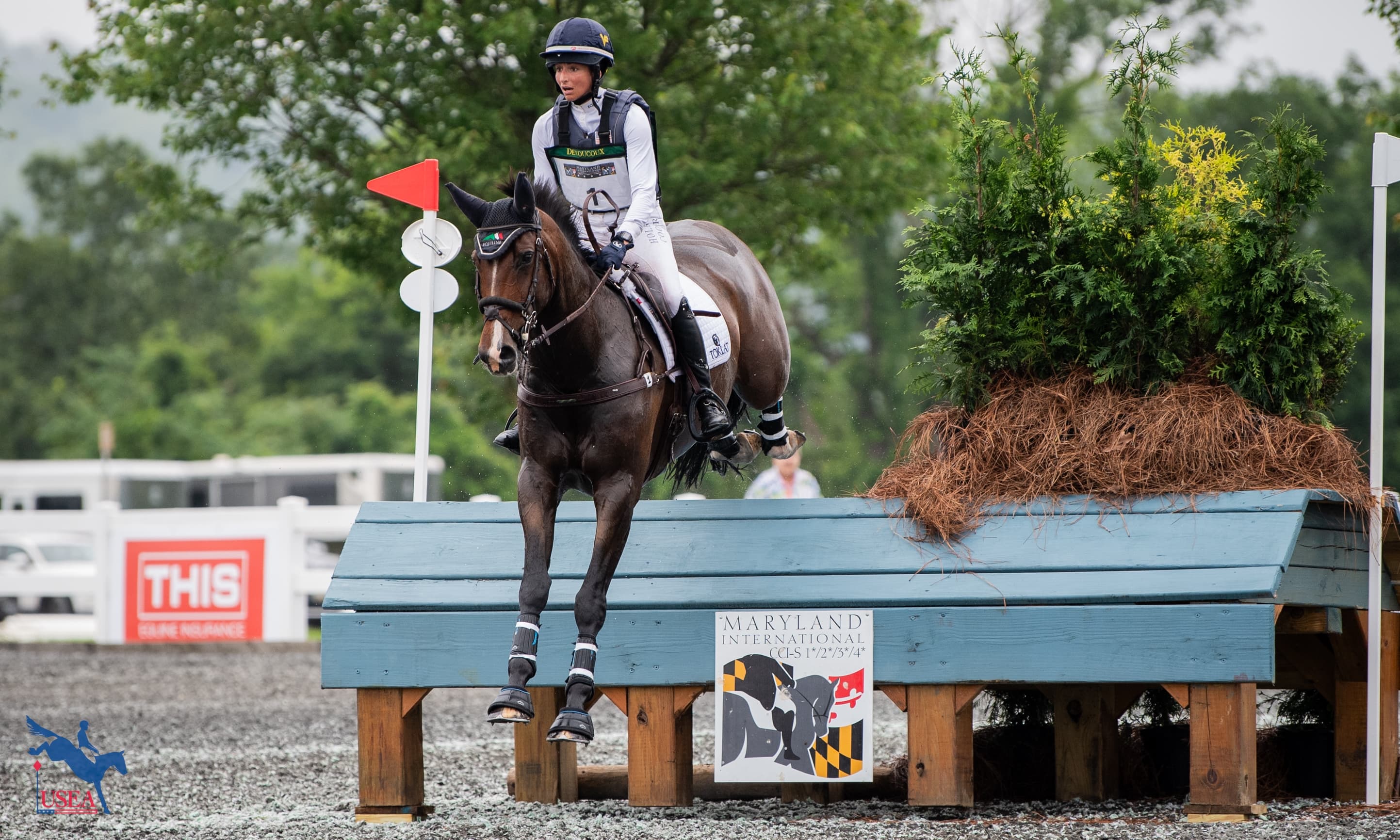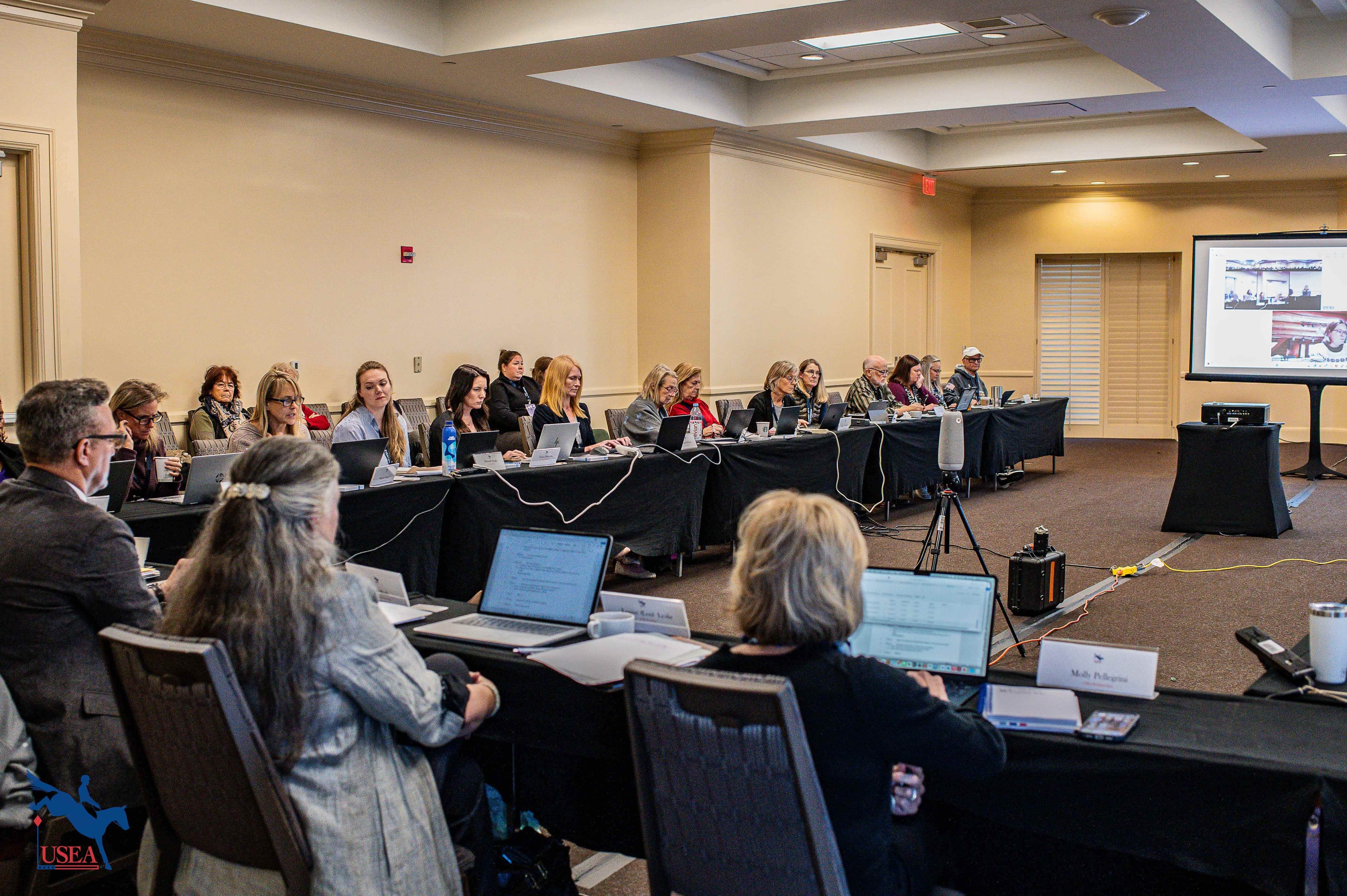Tips for Designing Your Own Cross-Country Schooling Course

Cross-country course designer Morgan Rowsell led a session on Friday evening at the 2019 USEA Annual Meeting & Convention about best practices for maintaining a cross-country schooling course.
“It just goes to show you that no matter what you’re doing, this sport is risky,” Rowsell said, observing that four deaths that have occurred this year took place during cross-country warm-up or schooling. “It behooves us to be as safe and vigilant as we can . . . Just because we’re not competing doesn’t mean it’s not high risk.”
To that end, Rowsell drafted up a list of important things to consider when creating a schooling course, whether it’s for your own personal use or whether you invite others to school on your property.
- Before you build a fence, you need to have the right field with the right space and the right footing. Footing is more important than anything.
- You need to mow, aerate, seed, etc. to ensure the best footing possible.
- Be sure to inspect your ground for gopher holes and other footing abnormalities on a regular basis – you can do this when mowing.
- Move things around – it’s good for your ground and it helps keep things fresh for your horses.
- Keep your schooling fences to Training level height and below – fewer problems happen at lower heights.
- You need to have a plan for an emergency – have emergency numbers prepared, know where the trauma center is, etc.
- Make sure all people schooling on your property have appropriate safety gear including helmets and vests.
- Check the structural integrity of your jumps as time passes. Wood will rot and nails or screws can pop out.
- All schooling jumps should be jumpable in both directions so you can create a lot of options in your schooling.
- Get flags, especially for your narrows and corners. Plastic flags are safer because they won’t splinter if you hit them.
- Design your water jump so that you can empty it. Once a year, drain your water jump and clear it out of all the organic material.
- Stake your jumps to the ground – it takes time but it saves you from the liability if something goes wrong.
For more tips for designing your own cross-country schooling course at home, check out the USEA Cross-Country Schooling Course Guidelines.
Helpful Links
- USEA Website
- Convention Page
- USEA’s Convention Coverage
- Livestream
- Program
- Schedule
- Floor Plan
- Vendor List
- 2019 Financials
- 2018 Annual Meeting Minutes
Follow the USEA coverage on social media!
#USEAConvention | Facebook | Twitter | Instagram | USEA’s Convention Coverage
About the USEA Annual Meeting & Convention
The USEA Annual Meeting & Convention takes place each December and brings together a large group of dedicated USEA members and supporters to discuss, learn, and enjoy being surrounded by other eventing enthusiasts. The USEA organizes multiple seminars in addition to committee meetings, open forums, and tons of fun! The 2019 USEA Annual Meeting & Convention is taking place at the Sheraton Boston Hotel in Boston, Massachusetts, December 12-15, 2019. Click here to learn more about the USEA Annual Meeting & Convention.
The USEA would like to thank Adequan, Bates, Nutrena, Charles Owen, Standlee Premium Western Forage, SmartPak, Mountain Horse, Parker Equine Insurance, Rebecca Farm, Auburn Laboratories, Stackhouse & Ellis Saddles, Nunn Finer, World Equestrian Brands, Gallops Saddlery, Revitavet, Hylofit, and Tryon International Equestrian Center for sponsoring the USEA Annual Meeting & Convention.














